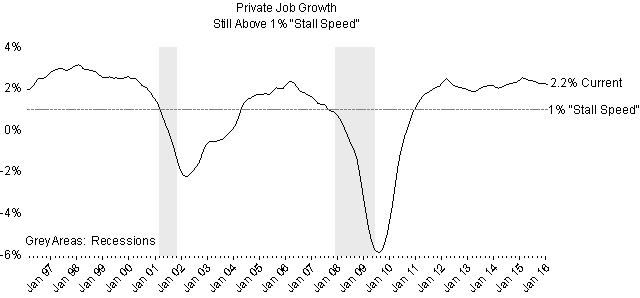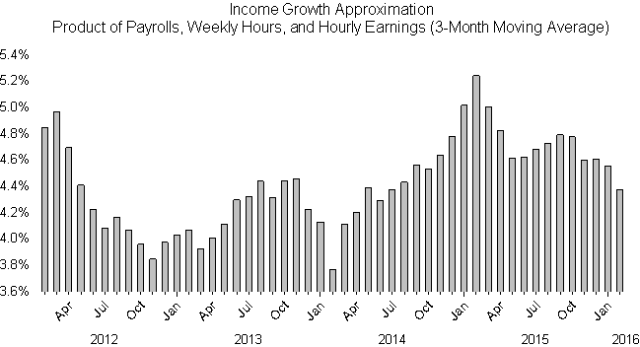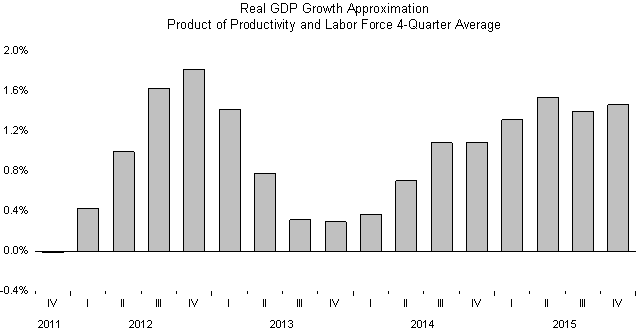WCA Weekly Update
Light economic data from the United States expected this week, and the European Central Bank (ECB) is expected to deliver additional monetary stimulus. China releases February’s Merchandise Trade Balance, Consumer Price Index, and Producer Price Index while Japan and the EU both release their latest GDP prints.
MACRO VIEW
We are looking for signs of an upturn in the data when we update our WCA Fundamental Conditions barometer and forecasts next week. For now, we view the recent stabilization in commodities and better tone in the stock market as providing some reason for optimism, but we need further evidence that the improvement is more than just short covering following a long slide. Generally speaking, the global economy is still weak. J.P. Morgan’s most recent Global Purchasing Managers’ Survey, for example, shows a drop in new orders, and inflation readings out of Europe are stuck near zero. Similarly, Japanese data is consistently weak with stagnant demand and little, if any, growth. China’s slowing economy prompted another cut in bank reserve requirements to encourage borrowing and lending, and a measure of domestic credit surged in January as foreign debt was paid down. The underlying trends reflecting global growth remain weak.
Here in the United States, the drumbeat of growth reflected in the jobs market remains steady. The February employment data, released last week, showed few signs of weakness in the headline numbers. Private payrolls grew 230,000 for the month, and year-over-year growth in private jobs remains near 2.2% — above our 1% “stall speed” indicator (Graph 1, below). However, we should look a little deeper at the data, especially since headline employment is not a particularly good forward-looking indicator. Breaking the report down a little further, we see that some trends in the broader employment picture call into question just how robust income and spending growth might be.
As a rough proxy for income growth, we can look separately at changes in jobs, hours, and hourly wages. Private jobs are up roughly 2.2% in the last year. Hours worked and hourly wages are down 0.3% and up 2.45%, respectively. Combining these three figures brings us to our 4.4% proxy for income growth (not bad!). However, this figure is trending down from a high water mark of over 5% a year ago and has fallen for each of the last five months (Graph 2, below). In other words, we cannot call Friday’s employment report either a timely indicator or an unequivocally positive one. All we can say is that the current employment picture appears to support continued modest growth here in the United States.
Graph 1:
Source: Bureau of Labor Statistics
Graph 2:
Source: Bureau of Labor Statistics
This slow growth scenario is further reinforced by 0.8% trend growth rate in the labor force, combined with a 0.7% trend growth rate in productivity. These two statistics point to a real domestic growth rate somewhere near 1.5% (Graph 3, below). This level of growth is about a full percentage point below the growth rate we estimate longer term. This combination of slow growth and employment gains points to stagnant productivity. Thankfully, more people are reentering the labor force as evidenced by a 0.2% increase in the labor force participation rate. As more people reenter the workforce, wage growth may remain under pressure and provide some support to the Fed’s case that labor slack provides justification for stimulative monetary policy.
Graph 3:
Source: Bureau of Labor Statistics
The next few days will include a number of important central bank decisions, and it is likely that a good part of the recently improved market tone is discounting more dovish central banks. On March 10, the European Central Bank decides on monetary policy and it is likely that the deposit rate will be cut, along with other measures. An addition to, and an extension of, existing quantitative easing is likely, along with various technical changes suggesting potential further actions are possible from the ECB. The Bank of Japan decides on monetary policy on March 15, but little is expected given a recent shift to negative interest rates and the need for the banking system to take some time in adapting to the new program. Lastly, the Fed decides on rates March 16. While no rate increase is expected, the decision will also include an update to forecasts and a press conference with Chair Janet Yellen. This will be an important opportunity for the Chair to express how the Federal Open Market Committee’s (FOMC) views on the rate path have changed since the start of the year (when four rate increases in 2016 were forecast). This outcome would be consistent with our long-run cash return expectation (~2%) laid out at the start of the year in our 2016 Viewpoint.
ASSET ALLOCATION PORTFOLIO POSTURE
LONG-RUN STRATEGIC POSTURE: Our macro outlook is for slow growth and stubbornly low inflation. The start of policy normalization following years of zero interest rate policy in the United States comes at a time of weakening global growth and mixed signals from the domestic economy. We continue to view the United States economy as best positioned to weather the overall weak global environment that resurfaced in 2015.
Kevin Caron, Portfolio Manager
Chad Morganlander, Portfolio Manager
Matthew Battipaglia, Analyst
Suzanne Ashley, Analyst
The information contained herein has been prepared from sources believed to be reliable but is not guaranteed by us and is not a complete summary or statement of all available data, nor is it considered an offer to buy or sell any securities referred to herein. Opinions expressed are subject to change without notice and do not take into account the particular investment objectives, financial situation, or needs of individual investors. There is no guarantee that the figures or opinions forecasted in this report will be realized or achieved. Employees of Stifel, Nicolaus & Company, Incorporated or its affiliates may, at times, release written or oral commentary, technical analysis, or trading strategies that differ from the opinions expressed within. Past performance is no guarantee of future results. Indices are unmanaged, and you cannot invest directly in an index.
Asset allocation and diversification do not ensure a profit and may not protect against loss. There are special considerations associated with international investing, including the risk of currency fluctuations and political and economic events. Investing in emerging markets may involve greater risk and volatility than investing in more developed countries. Due to their narrow focus, sector-based investments typically exhibit greater volatility. Small company stocks are typically more volatile and carry additional risks, since smaller companies generally are not as well established as larger companies. Property values can fall due to environmental, economic, or other reasons, and changes in interest rates can negatively impact the performance of real estate companies. When investing in bonds, it is important to note that as interest rates rise, bond prices will fall. High-yield bonds have greater credit risk than higher quality bonds. The risk of loss in trading commodities and futures can be substantial. You should therefore carefully consider whether such trading is suitable for you in light of your financial condition. The high degree of leverage that is often obtainable in commodity trading can work against you as well as for you. The use of leverage can lead to large losses as well as gains.
The WCA Fundamental Conditions Barometer measures the breadth of changes to a wide variety of fundamental data. The barometer measures the proportion of indicators under review that are moving up or down together. A barometer reading above 50 generally indicates a more bullish environment for the economy and equities, and a lower reading implies the opposite. Quantifying changes this way helps us incorporate new facts into our near-term outlook in an objective and unbiased way. More information on the barometer is found in our latest quarterly report, available at www.washingtoncrossingadvisors.com/insights.html.






